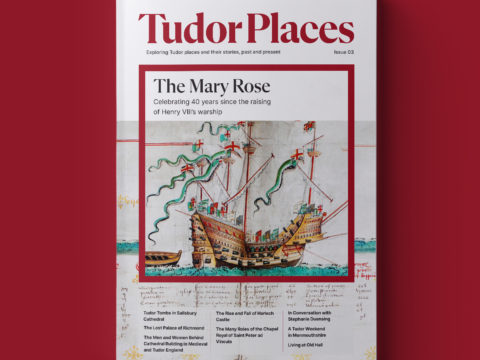Marguerite of Austria: Life Story
Chapter 4 : Full of Sorrow
Marguerite and Juan appear to have hit it off immediately, and she also quickly established warm relations with her in-laws. Unlike the treatment of Juana, Marguerite was permitted to keep her friends and servants from home, although according to a later source, she was warned that the familiar manners of the Burgundian court would not be suitable for her relations with Spanish nobles. She was also given huge quantities of plate and jewels.
The young couple were considered very much in love (standard behaviour following arranged marriages, because it was their duty to love each other once married). Marguerite’s beauty was described by Peter Martyr d’Anghiera, Isabella’s court historian, in very favourable terms: ‘if you saw her, you would think you were contemplating Venus herself’.
Marguerite and Juan were to make a progress throughout Spain, to show themselves as the future monarchs. Before they had left, there had been some talk as to whether the couple should be separated – Juan was not in robust health, and there were concerns that he was ‘over-exerting’ himself to satisfy his bride. ‘For the Prince (according to Martyr) carried away with love for her [was] pale and thin’. His physicians and King Ferdinand recommended that Marguerite should stay behind, but Juan wanted her to go, and Isabella overruled her husband. No-one, she declared, should part those whom God had joined in matrimony. Besides, she was hoping for an heir as soon as possible.
Isabella lived to regret her decision. In September, the court left Medina del Campo, with Ferdinand and Isabella heading for the Portuguese border for the solemnisation of the second marriage of the dowager-princess of Portugal, and Marguerite and Juan going to Salamanca, which was to be their marital home. They were greeted in the university city with great joy, but three days later, Juan was struck down by fever. His parents were informed, Isabella was obliged to remain with her daughter to complete the wedding, but Ferdinand rushed to his son’s side. Juan was lucid, but, apparently, resigned to his fate, and by 4th October he was dead - presumably from some illness other than excessive sexual exertion.
Ferdinand forbad news of their son’s death to be carried to Isabella until he could tell her himself, but Marguerite had no family to help her with her immediate grief. Since she was pregnant, she had been kept from Juan’s side until the end, when she was allowed into his room to say goodbye. The whole of Spain mourned Juan’s death – everyone and everything was draped in sackcloth, public offices were closed for forty days, black flags were hung, and even the nobles’ mules were clothed in black.
Any consolation Marguerite might have felt through bearing Juan’s child was snatched from her – she miscarried after an agonising labour. She was, she wrote, ‘so full of sorrow that there [was] no room for any more griefs.’ Throughout this time, Isabella never left her daughter-in-law, and Marguerite wrote home to her father that she would have died without the queen’s care. Isabella and Ferdinand had obviously taken to Marguerite. The queen wrote to Maximilian that the widowed princess was ‘as strong and full of courage as you would wish her to be and we try to console her…we have and will have as much care of her as we would have if her husband were alive.’ They agreed her dower of 20,000 crowns per annum.
Despite this kindness, there was no real place for Marguerite in Spain, although she had companionship in her sister-in-law, Catalina, to whom she taught some French in preparation for life at the English court. The heiress to the Spanish kingdoms was now Juan’s sister, Isabella, Queen of Portugal, who would shortly have a son, Miguel, before dying in childbirth. Miguel died, aged two, leaving Juana, married to Marguerite’s brother, Philip, as heiress.
In late 1499, Marguerite returned to her brother’s court. On this occasion, she travelled by land, the risks of travelling through France being weighed against another sea-journey. France was now ruled over by Louis XII, Marguerite’s former betrothed having died with no living children. Louis had rapidly spurned his wife of eighteen years, Jeanne de France (who, as Charles VIII’s sister was well-known to Marguerite) to marry the widowed Anne of Brittany. He had developed a warm affection for Marguerite during her period in France and wrote offering safe-conduct through his territories.
On her arrival, Marguerite found that Philip and Juana already had a daughter, Eleonora, and that Juana was expecting again. The result of this pregnancy was a son, Charles, born 24th February, 1500. Marguerite asked that the child might be christened Juan for her dead husband, but Philip had no desire to please his wife’s family, and insisted on Charles, for their grandfather, Charles the Bold. Despite this rejection of her request, Marguerite’s christening gift was lavish – a covered gold cup, set with rubies and diamonds.
Marguerite of Austria
Family Tree
